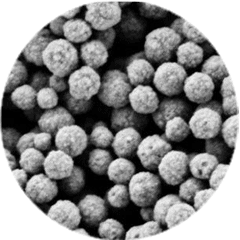Basic magnetic beads common questions and answers
Magnetic beads is a newly developed immunological technology in recent years. It combines the unique advantages of curing reagents with the high specificity of immunological reaction. Based on immunology, it penetrates into pathology, physiology, pharmacology, microorganisms, biochemistry and molecules. Genetics and other fields, and have been more and more widely used in immunological detection, cell separation, biological macromolecule purification and molecular biology. Common types of magnetic beads include hydroxyl magnetic beads, amino magnetic beads and carboxyl magnetic beads. Different types of magnetic beads have different application problems. Next, the editor of Aisen will share with you some common questions about basic magnetic beads and the answers to these questions.
Frequently Asked Questions about Hydroxyl Magnetic Beads
1. What is the dispersion of each type of magnetic beads?
70301 Mag OH-500 has uniform particle size and monodisperse;
70302 Mag OH-1000 amorphous, non-uniform particle size, average particle size 1 micron, polydisperse;
70802 Magrose OH spherical, particle size 30-150 microns, polydisperse.
2. How much is the nucleic acid binding capacity?
The binding force is greater than 20μg DNA/mg magnetic beads.
3. Application areas of Magrose OH
The surface modification of Magrose OH magnetic beads is used in the field of protein purification.
4. Is there any instructions for using hydroxy magnetic beads for nucleic acid extraction?
Hydroxyl magnetic beads need different buffers for nucleic acid extraction according to different samples. Therefore, there is no relevant instructions, and customers need to choose the buffer by themselves. If you need a matching kit, you can choose the relevant nucleic acid extraction kit.
Frequently Asked Questions about Amino Magnetic Beads
1. 15% glutaraldehyde solution preparation method and matters needing attention
Use PBS buffer for glutaraldehyde, pay attention to the current use.
2. How to deal with biological ligands such as IgG
IgG is prepared with PBS buffer. If there are other small molecules containing carboxyl or amino groups, remove them as much as possible to avoid competing reactions with magnetic beads.

Common problems of carboxyl magnetic beads
1. What is the amount of antibody coupling?
About 2.5-3μg/mg magnetic beads.
2. After carboxyl magnetic beads are coupled to IgG, which magnetic bead storage solution is more suitable?
The preservation solution can be PBST or tris-HCl.
The above is the introduction to the common questions and answers of basic magnetic beads. Different magnetic beads will always encounter various problems in the application process. It is necessary to understand the simple application methods and techniques of various magnetic beads to ensure that the magnetic beads are normal. use. The magnetic beads produced by Aisen Biotechnology are diverse in variety and excellent in performance. Customers in need are welcome to call for consultation.



